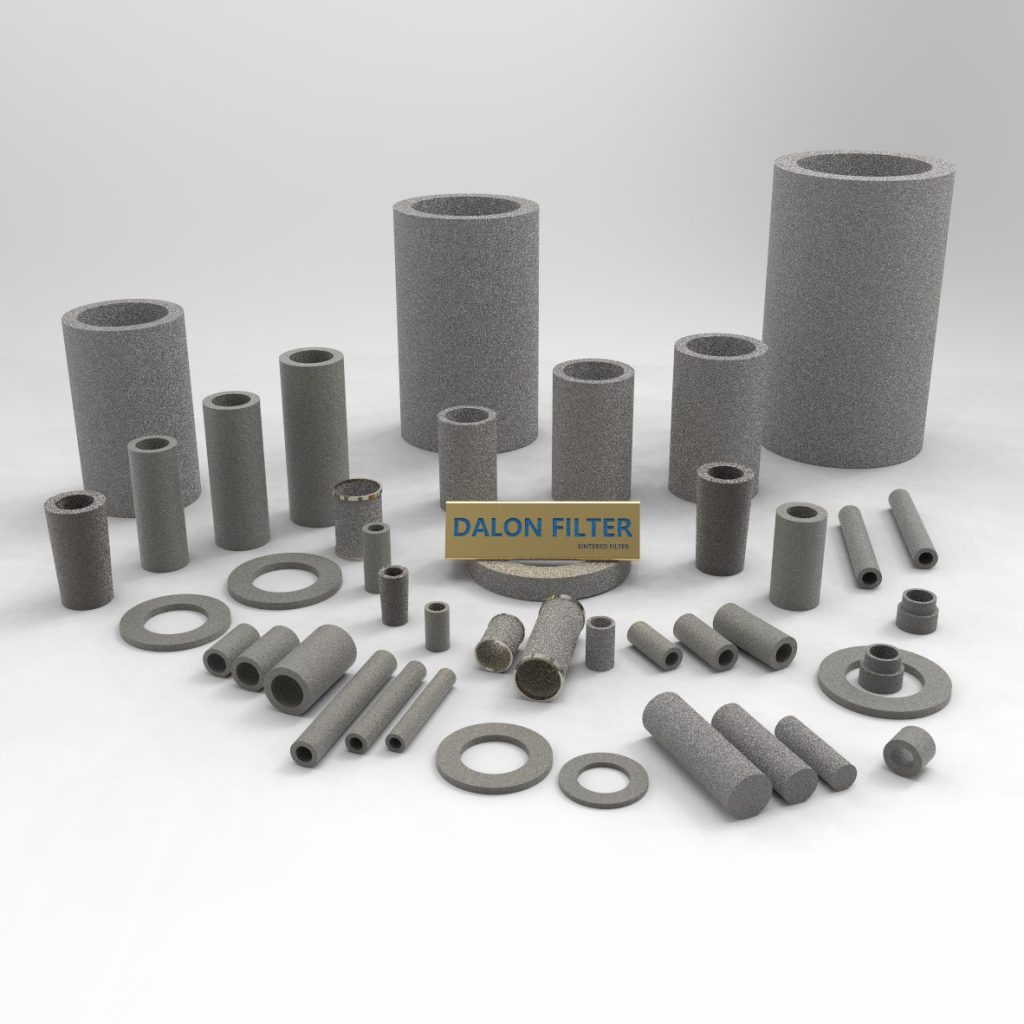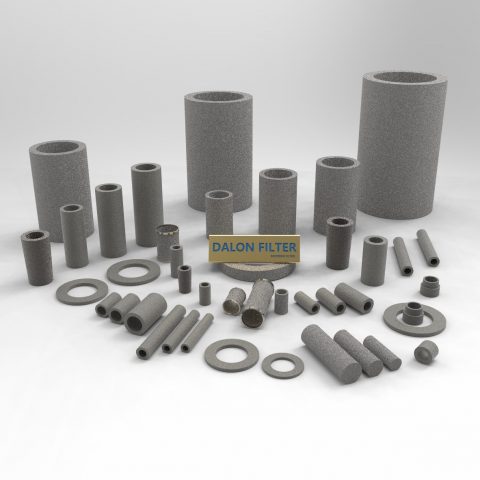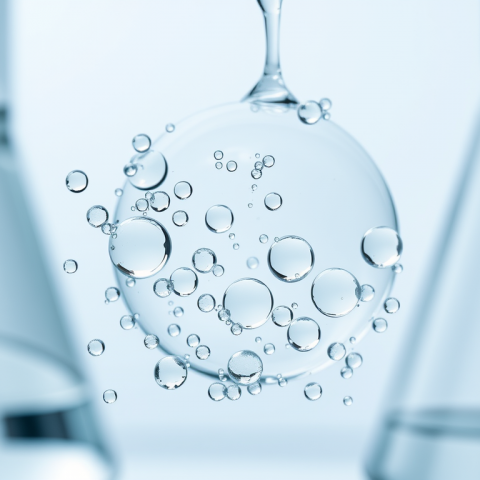Introduction: Why Maintenance Matters for 316L Sintered Filters

316L stainless steel sintered ring filters are critical components in a wide range of applications—from pharmaceutical air/gas purification to chemical processing and semiconductor manufacturing. These filters are engineered for precision, durability, and long-term reusability. However, to maintain optimal filtration performance and system reliability, proper cleaning and maintenance routines are essential.
Over time, contaminants such as particulates, organic residues, or metal oxides can clog the fine pore structure of the filter. Inadequate cleaning can lead to:
- Pressure drop increases
- Reduced filtration efficiency
- Permanent damage to filter media
- Costly downtime or product quality issues
This article outlines best practices for cleaning and maintaining 316L stainless steel ring filters, including preventive maintenance steps, deep cleaning procedures, failure indicators, and industry-specific precautions. Whether you’re managing filters in a bioreactor or a semiconductor line, this guide is your go-to reference.
Understanding the 316L Sintered Ring Filter
What Is a 316L Ring Filter?
A 316L ring filter is a type of sintered stainless steel filter formed into a circular ring or donut shape. It is fabricated through powder metallurgy, where 316L stainless steel powder is compacted and sintered (fused below melting point), creating a durable, porous structure.
Key Specifications:
- Material: AISI 316L stainless steel
- Pore size: 0.5 to 100 µm (application-dependent)
- Operating temperature: Up to 600°C (1112°F)
- Pressure rating: Up to 25 bar (depending on thickness and design)
- Shape: Ring, often used in circular housings, vented manifolds, or radial flow configurations
316L filters are favored for their chemical resistance, thermal stability, and corrosion resistance, especially in applications involving steam, solvents, or aggressive chemicals.
Section 1: Routine Cleaning (Preventive Maintenance)
Routine maintenance is essential to ensure that your 316L ring filter continues to perform efficiently and doesn’t accumulate irreversible fouling. The goal here is to clean the filter before it becomes severely clogged.
1.1 Backflushing – The First Line of Defense
Purpose: Removes loose particles and surface-bound contaminants
Method: Reverse-flow pressurized gas or fluid cleaning
Procedure:
- Use clean filtered gas or liquid
- Pressure: 1.5× the operating pressure
- Flow direction: Opposite to service flow
- Duration: 3–5 minutes or until pressure stabilizes
- Frequency: Every 50–100 operational hours or when differential pressure (ΔP) rises by 20%
Best suited for applications where dry particulates or precipitates accumulate on the upstream surface.
1.2 Ultrasonic Cleaning – For Fine Particulate and Sticky Residues
Purpose: Removes embedded particles using cavitation and acoustic agitation
Recommended Settings:
- Solution: Distilled water + 5% citric acid
- Temperature: Up to 60°C (140°F)
- Frequency: 40 kHz
- Duration: 30–60 minutes
- Rinse: DI water or ethanol post-cycle to eliminate residues
Alternative solvent: Isopropyl alcohol for organic materials like oils, resins, or glycols.
This method is non-invasive and maintains pore structure while deeply cleaning internal surfaces.
1.3 Chemical Soaking – Targeted Removal Based on Foulant Type
| Foulant Type | Cleaning Agent | Parameters |
|---|---|---|
| Organic contamination (e.g., oils, greases) | 10% NaOH solution | 30 min @ 50°C |
| Inorganic scale (e.g., mineral salts, oxides) | 10% HNO₃ (Nitric acid) | 15 min @ ambient |
| Combined fouling | Sequential NaOH → rinse → HNO₃ | Monitor reaction and avoid overheating |
Always neutralize acidic/alkaline residues with DI water after treatment. Failure to rinse can result in stress corrosion or process contamination.
Section 2: Deep Cleaning Procedures (For Severely Fouled Filters)
When filters show signs of severe blockage, normal cleaning may not be enough. In such cases, a more intensive protocol is necessary.
2.1 Step-by-Step Deep Cleaning Protocol
Step 1: EDTA Soak
- Soak filter in 5% EDTA solution for 4–8 hours.
- Purpose: Dissolves metal oxides and complex fouling agents.
- Temperature: Ambient to 40°C
Step 2: Ultrasonic Detergent Agitation
- Use a non-ionic surfactant like Alconox® in DI water.
- Ultrasonic agitation (40 kHz) at 50°C for 45 minutes.
Step 3: High-Purity Rinse
- Rinse thoroughly with deionized water or ethanol.
- Continue until conductivity of rinse water matches incoming water.
Step 4: Steam Sterilization (for sanitary applications)
- 121°C at 15 psi for 20–30 minutes in an autoclave.
- Avoid rapid depressurization to prevent thermal shock.
Section 3: Inspection and Monitoring
Regular inspection is critical to detecting early signs of failure or contamination retention.
3.1 Pressure Drop Monitoring
- Install differential pressure gauges across the filter.
- If ΔP exceeds 10 psi above baseline post-cleaning, inspect further or replace.
3.2 Visual and Microscopic Examination
- Use 10× magnification to inspect:
- Cracks
- Deformed pores
- Discoloration (chemical corrosion)
- Minor tarnish is normal; pitting or stress lines are not.
3.3 Bubble Point Testing
- Recommended for filters in critical environments (e.g., pharmaceuticals, semiconductors)
- Confirms pore uniformity and retention rating post-cleaning
Section 4: When to Replace, Not Just Clean
Despite their durability, 316L ring filters have a finite lifespan. Cleaning is no longer effective when:
4.1 Irreversible Clogging
- Flow remains <70% of baseline even after deep cleaning
- Indicates internal pore collapse or matrix fouling
4.2 Structural Damage
- Cracks, dents, or mechanical deformation during handling
- May result in bypass leakage
4.3 Corrosion or Surface Pitting
- Caused by exposure to aggressive acids (e.g., >5% HCl or chlorides)
- Compromises structural integrity and hygiene compliance
Section 5: Storage and Handling Best Practices
5.1 Dry, Inert Storage
- Store filters in dry nitrogen atmosphere or vacuum-sealed bags
- Prevents surface oxidation, especially in humid environments
5.2 Protective Packaging
- Avoid stacking; use soft separators between units
- Maintain original orientation to prevent internal stress during installation
5.3 Handling Tools
- Use non-metallic tweezers or gloves to prevent contamination or scratches
Industry-Specific Cleaning Tips
Pharmaceutical Use
- Validate cleaning with TOC analysis or swab testing for residues
- Maintain a cleaning log for GMP compliance
Semiconductor Manufacturing
- Use only UHP (ultra-high purity) solvents—avoid acetone, which leaves residues
- All cleaning steps must meet ISO Class 5–7 cleanroom protocols
Chemical Processing
- Avoid hydrochloric acid concentrations >5% to prevent chloride stress corrosion
- Consider duplex stainless or Inconel upgrades for aggressive processes
Frequently Asked Questions (FAQ)
Q1: Can I autoclave a 316L ring filter?
Yes. 316L stainless steel tolerates autoclaving at 134°C for 30 minutes. Avoid rapid cooling to prevent thermal expansion-induced cracking.
Q2: What is the maximum backflush pressure?
Depends on wall thickness. For a 2 mm-thick ring, backflushing up to 25 bar is acceptable. Confirm with housing pressure rating.
Q3: Will cleaning change the pore size?
No. Sintered 316L filters maintain their pore geometry unless abrasive tools are used. Avoid wire brushes or blasting media.
Q4: How do I remove polymer fouling?
Use solvent-specific cleaning:
- Polyethylene: Toluene soak
- Nylon: 10% NaOH
- Fluoropolymers: May require thermal oxidation
Q5: Can I use high-pressure water jets for cleaning?
Not recommended. Water jets may force particles deeper into the filter and risk pore damage.
Maintain Peak Performance with Proper Care
The 316L stainless steel ring filter is a powerful tool for industrial, medical, and chemical applications. With proper cleaning, monitoring, and inspection, you can extend its lifespan significantly—often up to hundreds of cycles. Following structured cleaning protocols (from backflushing and ultrasonic cleaning to deep acid soaking and sterilization) ensures your filtration system remains reliable, efficient, and compliant.
Neglecting maintenance, on the other hand, can lead to premature failure, contamination risks, and costly downtime. Whether your filters are used in cleanrooms, reactors, or pneumatic lines, routine care is essential to protect your processes and products.
Explore our full range of 316L stainless steel ring filters and download maintenance protocols here to extend the performance and life of your filtration systems.



